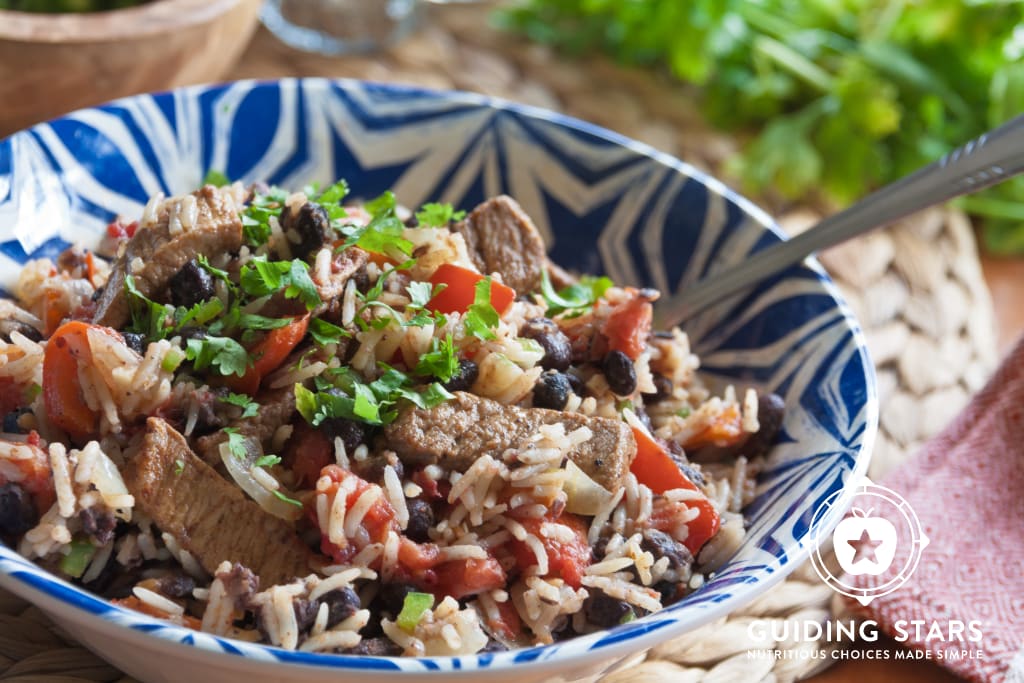Between a busy fall season and upcoming holidays, big batch cooking holds appeal for lots of us at this time of year. After all, having plenty of prepped food ingredients around can make it easier to put together a variety of healthful meals quickly and easily. Maybe you’ll be cooking for a crowd in the next month or two and doubling (or tripling) recipes to accommodate your guests. And don’t forget those comforting slow cooker meals that result in multiple portions of food. (By the way, I’ve covered food safety for slow cooking in a previous blog post if that’s your primary interest.)
Whatever your reason, it’s important to realize that recipes that have large yields require special food handling in order for the food to remain safe to eat. Food that is improperly handled or stored can cause foodborne illness and may have more serious consequences for people in at-risk groups, such as pregnant women, young children, older adults and anyone with compromised immunity. So, to help you keep your good food healthy for all, here are some tips for safely handling those plentiful portions.
Beef Spanish Rice
Batch dishes involving rice merit special care to minimize risk of botulism.
View recipe »Clean, separate, cook, and chill.
Getting these four basic jobs done right is important no matter how much food you’re preparing. Frequent washing of both your hands and surfaces like counters and cutting boards is one of the most important steps you can take to keep food safe. Separating raw meats and poultry items from other foods in storage and during preparation, along with cooking food to the correct temperatures and chilling it all down quickly (if it’s not consumed immediately) are the other must-do steps for safe food preparation. Here is more information on these important steps.
Partial cooking is problematic.
Cooking food halfway through and finishing the job later is dangerous because it allows the food to remain in the “danger zone” temperature range (40 – 140 degrees F) for too long, increasing the risk of bacterial growth. If you want to divide the cooking of a recipe into steps, choose a recipe that specifies how to do that. For example, a recipe may give specific prep-ahead instructions (such as “recipe may be prepared ahead of time through step 2”) where you assemble or mix together some ingredients, then refrigerate the mixture until cooking time.
Banish the big bowls.
Large, deep bowls of soup, stew or cooked meat or poultry take a long time to cool down to a safe temperature—even when they are in the refrigerator. Get in the habit of always dividing large amounts of cooked foods into several smaller portions, and transferring those portions into shallow containers (a food depth of 2 inches or less is best) before placing them in the refrigerator.
Cool it safely.
Cooling food slightly before refrigerating it is fine, but to do so safely, put the container of food on a cooling rack to allow air to circulate around and under the pan. Do not let the food sit out on the counter for longer than about 15 minutes —then get it into the refrigerator. Set a timer to remind yourself because you’re likely to forget it if you step away from the kitchen. If the food is still warm when you put it in the refrigerator, cover it loosely to allow heat to escape. If you want to cool something down quickly, place a the containers in a pan to which you’ve added cold water and some ice, then slowly stir the food until its temp comes down, then immediately move the food to the refrigerator.
Don’t store it forever.
The longer you store food in the refrigerator, the more chance it has go become contaminated—or at the very least, start to break down and not taste so great! In general, you can safely keep cooked food for around 3-4 days. After that, eat it or get rid of it. If you want to keep leftover food longer, the best plan is to put some into the freezer right away—don’t keep it for several days in the refrigerator first and then freeze it. For more specific information about how long to keep or freeze food, check out this chart from Foodsafety.gov.
Reheat safely.
When you want to reheat the food you’ve made from your big-batch recipe, use the stove, oven or microwave—not the slow cooker. Most slow cookers do have a removable crock insert that is oven safe, so you can reheat the food in the oven or microwave and bring it to a safe temp (165 degrees recommended), then put the crock into the slow cooker to keep it hot.
